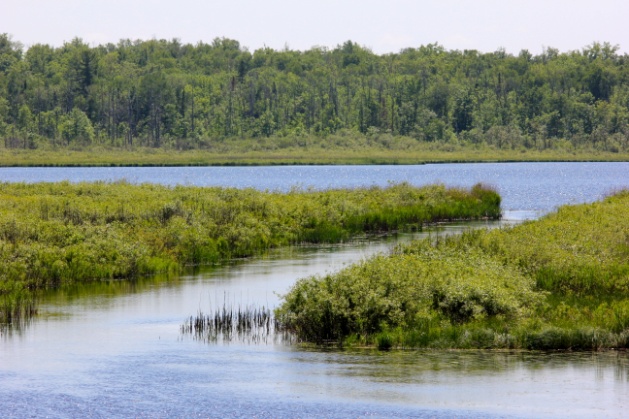Hilary Fruin and Steve Ring
Do unto those downstream as you would have those upstream do unto you. -- Wendell Berry
Minnesota is well known for its lakes. They are a way of life, connecting generations of residents and tourists to nature, adventure and beauty. Our state is also home to the headwaters of the Mississippi River, which provides drinking water to millions, and the St. Louis River, the largest U.S. tributary to Lake Superior.
The Sierra Club North Star Chapters and our community partners believe that Minnesotans have a responsibility to protect our interconnected water systems. Interested Sierra Club members can join the Waters and Wetlands Committee to learn about, act on and coordinate with other groups that are responding to the multiple threats to our waters, including:
Proposed detrimental changes to state water quality standards,
Proposed administrative rules that agencies use to implement state water quality statutes,
Pollution from sulfide mining,
Chloride from road salt use,
Excess nutrient and sediment polluting streams and lakes,
Bad water bills in the legislature, and
Threats to wetlands, which imperil downstream rivers and lakes
Today, the stakes couldn’t be higher in this divided political environment. Citizen and legislative action have a direct impact on the health and vitality of the people, wildlife, communities and businesses that depend on clean water. Clearly, that is all of us.

Photo credit: Ivy Vaino
Nitrogen Fertilizer Threat
Let’s look at one of those threats: the Nitrogen Fertilizer Rule proposed by the Minnesota Department of Agriculture.
According to the Minnesota Pollution Control Agency (MPCA), about 40 percent of Minnesota’s lakes and streams are impaired, failing to meet one or more water quality standards.
While many factors contribute to the decline of our waters, one of the most critical threats is nitrate pollution from farm fertilizer. Poor soil health, flooding and bare fields in the winter result in runoff and groundwater contamination.
The Star Tribune recently reported on the impact, stating “Above 10 parts per million—the maximum allowed by state and federal health standards—nitrates present a risk to pregnant women and infants … According to the state Health Department, there are several dozen community public water systems with source nitrate consistently above the maximum safe level, although they either treat the water or take the source off-line to prevent or resolve a violation. Multiple cities, from Hastings to Perham, Minn., have had to install costly water-treatment technology, at a cost of about $3,500 per household. An Agriculture Department survey of 20,000 private wells found that one in ten is at or above the legal limit for nitrates, primarily in southeastern and central Minnesota.”
To comply with the 1989 Ground Water Protection Act, and in response to the growing threat, Minnesota’s Department of Agriculture has proposed a new Nitrogen Fertilizer Rule.
The Sierra Club and other environmental groups have urged substantial strengthening of that rule, which falls far short of what we need to address this urgent issue. As proposed, it does not meet the requirements of the 1989 statute, which established the state goal that "groundwater be maintained in its natural condition, free from any degradation caused by human activities." The new fertilizer rule relies primarily on voluntary actions and even its most restrictive mandatory requirements will not protect groundwater.
Yet there is some progress to report. Innovative voices in agriculture are growing stronger—from University of Minnesota’s Forever Green Initiative (forevergreen.umn.edu) to sustainable farmers to farm-to-table chefs who are putting high-efficiency--and tasty--grains on the menu.
More citizen resistance will be needed moving forward as agricultural non-point source pollution has become the “leading source of water quality impacts on surveyed rivers and streams, the second largest source of impairments to wetlands, the third largest source for lakes, and a major contributor to contamination of surveyed estuaries and ground water” according to the EPA’s National Water Quality Assessment. Nonpoint source pollution, unlike pollution from industrial and sewage treatment plants, comes from many diffuse sources.
Hilary Fruin is a volunteer leader with the Water and Wetlands Committee. Steve Ring is Chair of the Water and Wetlands Committee.